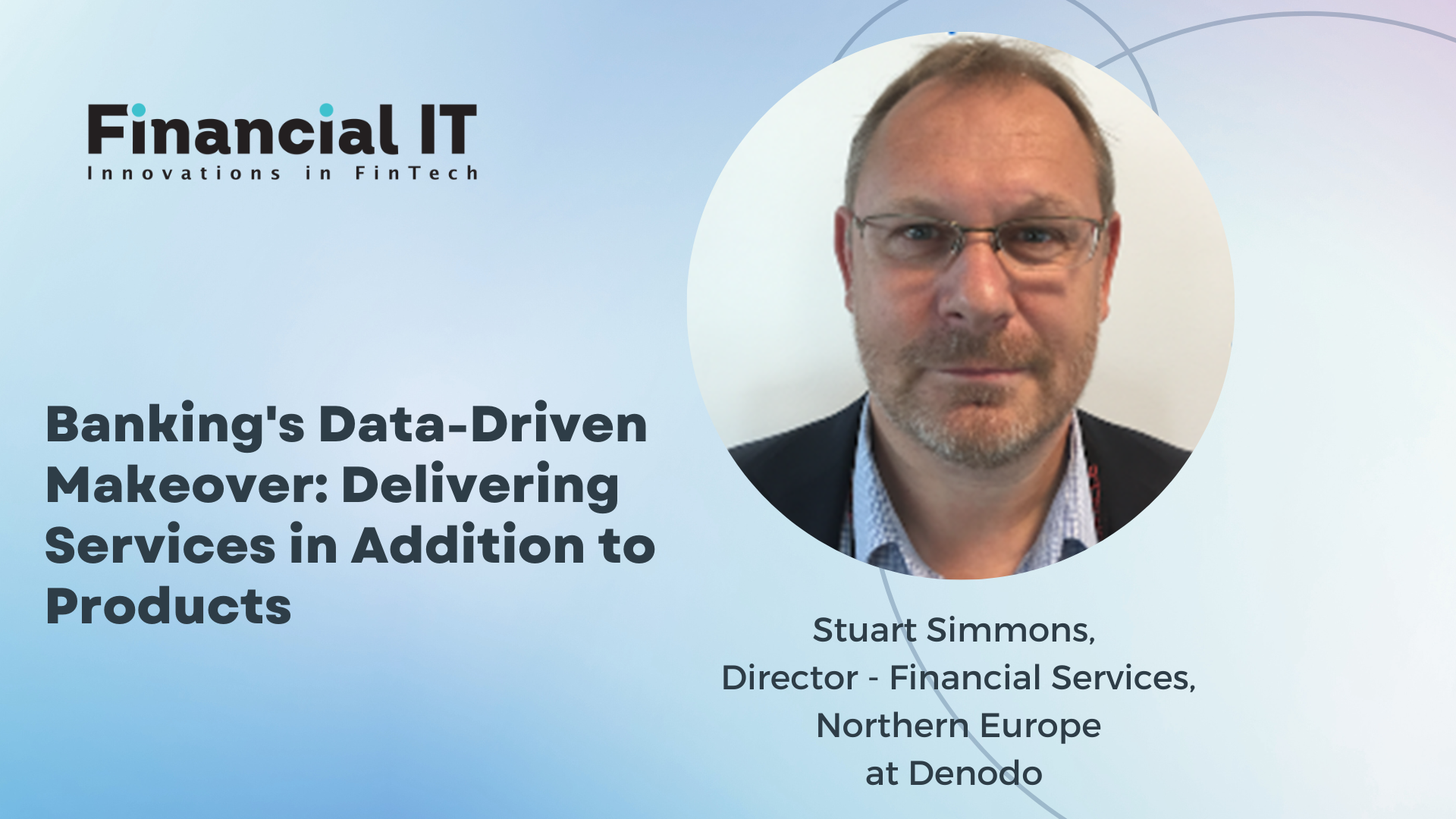Banking's Data-Driven Makeover: Delivering Services in Addition to Products

- Stuart Simmons , Director - Financial Services, Northern Europe at Denodo
- 18.06.2024 11:45 am #banking #datadriven #services #products
In recent years, retail banks have lost their shine. Manyhave become a storefront for financial products without deeper insight into their customers’ wants and needs, making it feel as though they’re blindly attempting to sell banking products. This approach is no longer cutting it: according to data from the Financial Conduct Authority, there was no change in the number of bank or building society accounts from 2017 to 2022.
Selling products alone isn’t working, and now, when digital-first challenger banks are disrupting the industry, traditional banks must lean into adding value or they risk being outpaced. This means providing customers with insights that support their decision-making, both now and in the future.
Open Banking is designed to facilitate this by enabling banks to share data to provide a consolidated view of a customer’s financial situation. Open Banking is proving to be an important approach for enabling modern, transparent, and integrated customer experiences. However, on its own, Open Banking will not give institutions a true competitive advantage.
For that, they will need to find new ways to manage the data they already hold, across the many lines of business through which customers may interact.
Imagine being able to instantly see a complete financial picture across all accounts, in one place, with highly tailored product and service recommendations, and instant approvals for products such as mortgages – all in real time. For a customer, that’s a shift that makes a bank feel less like a vendor and more like a partner; for the bank, it represents a new, more proactive way of meeting customer needs with financial products.
Getting there, however, means tackling the highly complex data infrastructure that financial institutions have long relied on.
The Challenges of Traditional Data Infrastructure
Banks hold tremendous volumes of data. Consider a typical 30-year mortgage: thousands of payments, hundreds of manual interactions, ongoing assessments around affordability and re-mortgaging, all adding up to a considerable amount of data per customer over a long period of time.
For manageability, this kind of information is typically held in function-specific data lakes – mortgages are just one line of business for banks - all held within their own silos. Loans, insurance, savings accounts, and more, are all siloed datasets sat within different divisions, collectively amounting to potentially millions of data points every day. Organisational silos of this scale make it difficult for banks to communicate across divisions, let alone to customers in near real-time.
Additionally, the technology required to physically store Open Banking data simply doesn’t even exist, even taking the hyperscaling cloud vendors into account. Financial institutions cannot replicate and store Open Banking data within their own environment.
Banks require a unified real-time view of financial information before granting loans, which ultimately comes down to having visibility into customers’ existing financial commitments.
Banks lack the consolidated view of customer habits and spending that is necessary. This deficiency delivers minimal value to customers who require more transparency and agency over their finances in an instantaneous world.
Reimagining Data Management
While a bank’s physical data management systems – that is, the database management systems and data storage locations holding all that data – may prove to be exceedingly complex and expensive to rebuild and replace, institutions can also look to approaches based on logical data management to overcome the limitations of these systems, as they enable substantial changes without affecting the underlying physical data sources.
Logical data management platforms create a real-time, conceptual model of the information being held across many silos, so it can be combined, as and when necessary, in a way that is consistent and secure. Unifying data in this way not only streamlines processes for banks, so they can make decisions more efficiently, but it also lays the foundation for enhanced products and services. For example, a logical data management platform can enable bank representatives to make instant decisions on loans and mortgages.
The Financial Conduct Authority published its Financial Cost of Living Survey in January 2024, which showed that 7.4 million people in the UK are struggling to pay their bills and meet credit commitments. Imagine a scenario in which the bank or building society identifies opportunities for creating more disposable income by analysing spend and suggesting an approach to consolidating bills, such as subscription services. This would help many banking customers to improve their financial positions.
For example, a customer with 10 years left on their mortgage repayments, who is spending money in DIY stores, may be interested in a home improvement loan. Having a consolidated view of spending habits enables banks to suggest relevant, timely financial management interventions and other forms of support.
The Reality of the Data Economy
Harnessing the level of financial insight required for banks to deliver on the promise of financial management services, or instant decisioning for loans, is no easy task. Working together, Open Banking APIs and logical data management platforms support this transformation. This combination would provide banks with greater freedom to securely access customer data, in real time, across many silos and increase their ability to work with that data in an effective, insightful way.



















